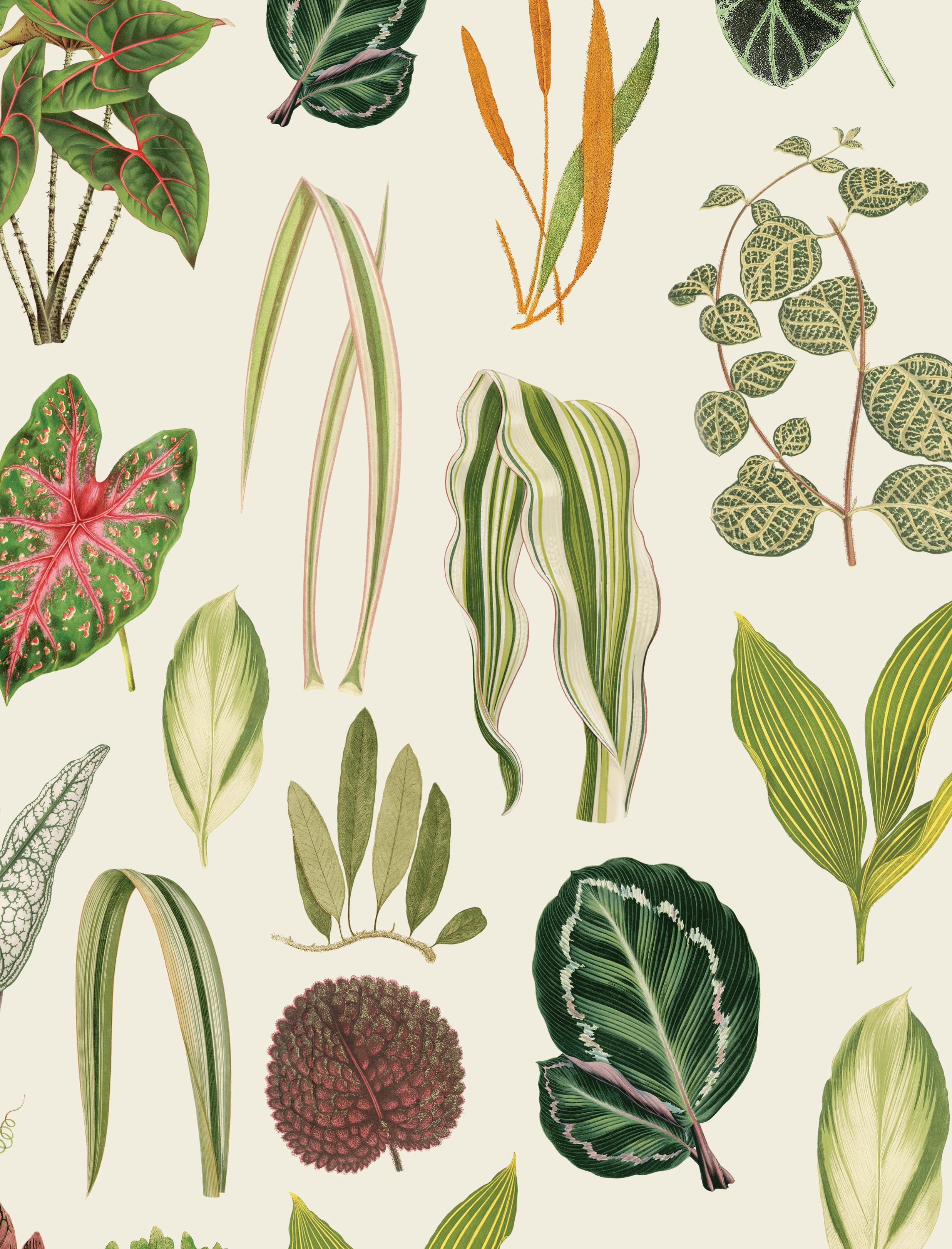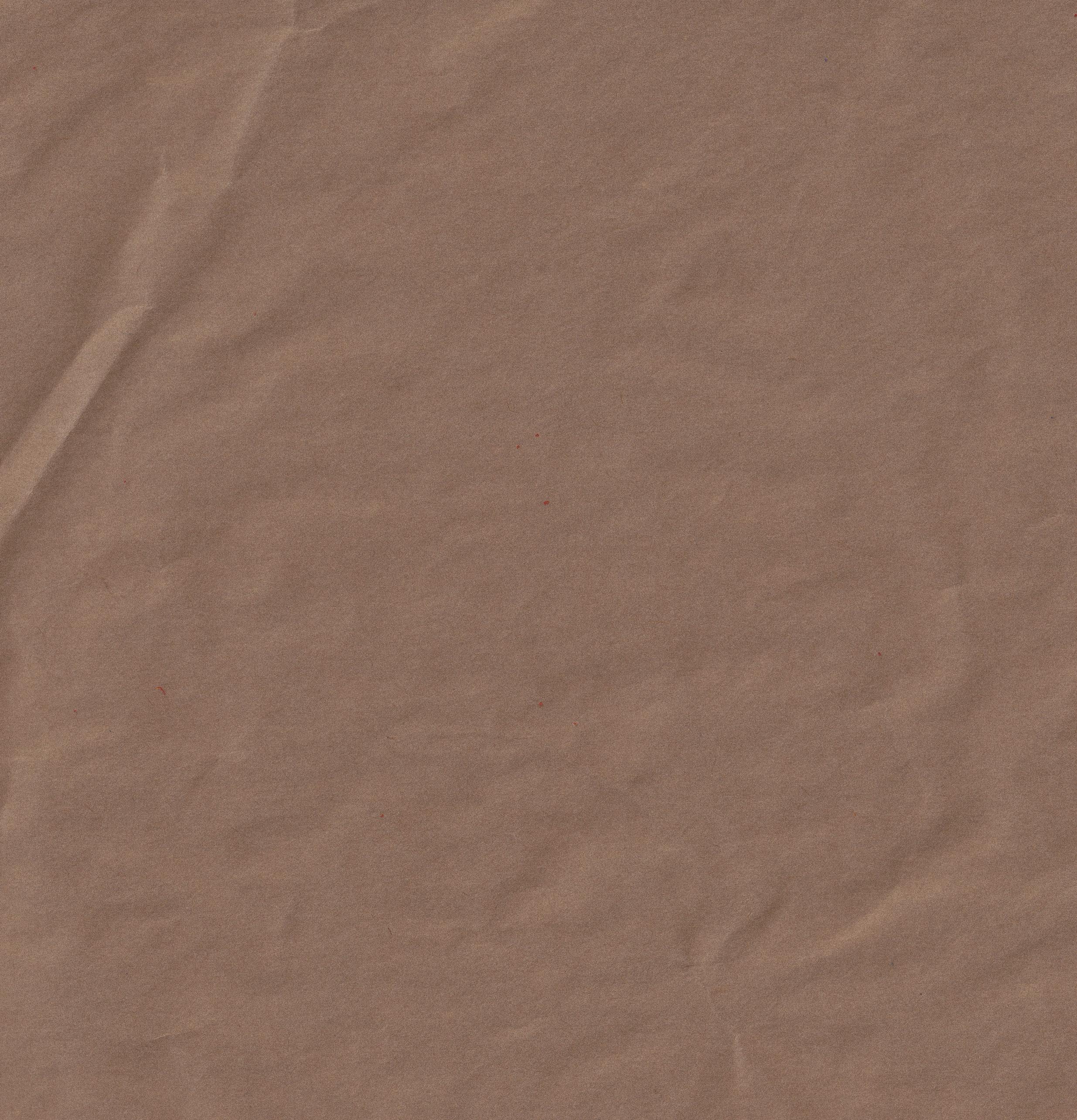NATIVE WOMEN’S ASSOCIATION OF CANADA MAGAZINE



Shannen’s Dream: A legacy promoting safe education for Indigenous children.
Enactivism: The relationship between patterns, numbers, and language.
University educator offers “transformative lessons on the land.”
issue 20
Protecting Traditional Teachings—both on the land and through words—ensures Indigenous culture, Knowledge, and Traditions are strengthened and honoured. This edition celebrates the efforts of many Indigenous women, girls, Two-Spirit, transgender, and gender-diverse+ peoples who are tirelessly advocating for the revitalization of language and land-based teachings.

by Julie Flett from the book, Still This Love Goes On, written by `Buffy Sainte-Marie, illustrated by Julie Flett, and published by Greystone Kids.

Full story: Contributing to Indigenous Children’s Understanding Through Books, page 8


Welcome to the 20 th Edition of Kci-Niwesq, the magazine of the Native Women’s Association of Canada (NWAC).
In these pages we bring you stories about learning, and about efforts to keep alive the languages of our ancestors and Traditional land-based earning.
Languages are central to all First Nations, Inuit, and Métis cultures. Large numbers of them survived colonization, including the system of Indian residential schools, which aimed to “take the Indian out of the child.” But many have been diminished to the mouths of a few speakers and are under threat of extinction.
For that reason, we applaud those who are devoting their lives to preserving language and land-based teachings for future generations. We would like to introduce you to a few of those remarkable people in this edition.
They include Belinda kakiyosēw Daniels, who runs a nēhiyawēwin
(Cree)-learning summer immersion experience for aspiring Cree speakers. This remarkable initiative that teaches Cree syllabics, or cahkipēhikana, was inspired by a vision that came to Dr. Daniels when she was a young girl. And they include authors like Julie Flett, who is writing and illustrating books for children that incorporate the Cree and Métis languages of her grandparents. Although Ms. Flett’s father did not speak Cree, he heard it as a child. Ms. Flett says that reconnecting to this language helped her understand his worldview and brought them closer together in his later years.
We will also bring you stories about Indigenous women who are rethinking education and delivering it in ways that
work better for our children. We speak with Barbara Nolan, Language Commissioner for the Anishinabek Nation, about her journey since creating an Indigenous language program through the Ministry of Education, and why she has dedicated her life to safeguarding Indigenous traditions and teachings.
We learn from Dr. Amy Parent, an associate professor at Simon Fraser University, how integrating land-based learning for all her students instills values of respect, reciprocity, balance, and living in harmony with all living things. It has been a powerfully transformative experience for both her settler and Indigenous students.
Florence Glanfield, Vice-Provost of Indigenous Programming and Research at the Universityof Alberta, is Métis and the recipient of last year’s Esquao Award—given by the Institute for the Advancement of Aboriginal Women in Alberta, which honours the achievements of Indigenous women. Dr. Glanfield is a mathematician whose work with Indigenous People inspired her to develop different ways to learn numerical concepts.


And, in Sturgeon, Saskatchewan, land-based instructor Tanya McCallum has created a Warrior’s Club to teach the First Nations
boys in her community about Traditional Ways. In the process, the program helps them gain independence, develop a respect for culture and community, and learn to treat others with kindness. We also learn about the legacy of Shannen Koostachin, a 15-year-old girl from Attawapiskat First Nation, whose fight for a “safe and comfy” school on her own reserve turned into a youth-led movement for better schools on First Nations across Canada.
So, thank you once again for opening the pages that follow. Thank you for reading edition 18 of Kci-Niwesq. Please drop us a line and let us know what you think at: reception@nwac.ca.
Ignited by a dream she had on her grandparents’ floor, Belinda kakiyosēw Daniels founded the nēhiyawak Language Experience—a summer camp that teaches Cree language, culture, and land-based teachings.
Belinda kakiyosēw Daniels’ dream of creating a nēhiyawēwin (Cree) learning experience started with an actual dream on the floor of her grandparents’ house on Sturgeon Lake First Nation in central Saskatchewan.
Her grandparents were fluent in Cree, and her grandfather also spoke Michif because his mother was Métis. It was common for Dr. Daniels, who is now an assistant professor of Indigenous Education at the University of Victoria, to hear other dialects of Cree while growing up, even though she did not understand many of the nonEnglish words.
“I was always intrigued by Indigenous languages, especially my own,” Dr. Daniels says in a recent interview. “And I would try and speak Cree to my grandparents. But they would be like, ‘What are you trying to say? Shhhhhh.’ And they would correct me by telling me to speak English.”
So, although she did not speak Cree, she grew up being familiar with the language’s intonation and rhythm. Eventually, it led her to establish nēhiyawak Language Experience, a summer camp where participant
learners are immersed in the language and culture while taking part in land-based experiences. For Dr. Daniels, second-language education has been “a calling.” She adds, “Learning my own Cree language, and sharing that journey with others who want to learn too, doesn’t feel like work to me. It is truly a gift.”
She traces her passion to a dream she had when she was about 11 years old. The dream became part of her PhD dissertation as a memory and a story re-told. In academia, this is called an Indigenous methodology.
“I was lying on the floor of my grandma’s kitchen, and I was playing with this heavy, silver hand mirror and visualizing what the world might look like on the other side of the mirror,” she says. “I was awake, playing and imagining. It was in the middle of the day. But, the more I thought about it, the more I wondered. Then suddenly I was transported into the dimension of the mirror.”
In her vision, she says she was on a path. The sun was shining and the wind was lightly blowing on her face and shoulders. On her right was a forest, thick with trees. On her left
was a flat rock wall that could have been the side of a mountain.
“When I turned to my left to have a good look at it, I realized there was writing on this wall. I didn’t know what it was at the time, but I was mesmerized by it,” says Dr. Daniels. “And now I know it to be Cree syllabics, called cahkipēhikana.”
She was overcome with curiosity, but she was also a bit frightened. “I lifted my hand and traced the etchings,” she says. “And then, as I looked back to where I had come walking from, I was immediately transported back to my grandma’s floor.”
Dr. Daniels says she tried to recreate the experience multiple times in the following years, always without success. “But I have come to realize those were Spirit Markers—a kind of petroglyphs—and I believe the Language Spirit was choosing me to do the work that I’m doing now.”
When she reached university age, she attended the University of Saskatchewan and enrolled in a course called Cree 101. It was “really hard,” says Dr. Daniels. “I struggled because it was based on memorization, grammar, macrons, and all these different paradigms
 Photo: During the nēhiyawak Language Experience, participants are immersed in the language and culture, while taking part in land-based experiences. Photo credit: Tenille Campbell
Photo: During the nēhiyawak Language Experience, participants are immersed in the language and culture, while taking part in land-based experiences. Photo credit: Tenille Campbell
the one aspect of language acquisition. This is the whole experience.”
Learning Indigenous languages of our ancestors is what keeps us connected to who we are, says Dr. Daniels, because the languages are so much a part of Indigenous identity and connection to place.
“We come from this land and Creator gifted us this language,” she says. “It informs who we are as distinct peoples. I am nēhiyaw. I come from the nēhiyawak Nation. Everything about us is in the language—what we believe, how we orient ourselves, and how we govern ourselves. All those things keep us distinct.”
In the beginning, she says many of her friends, even those who spoke Cree, did not understand her passion. They did not comprehend the value of learning an Indigenous language in a world where English is the discourse of everyday life. This, she says, is a product and process of colonialism.
However, others “believed in the work that I was doing and often they would visit and give me some guidance,” says Dr. Daniels. “My family in my community is very much a supporting factor in the work that I do. My continuing dream is also a collective one because I work with a lot of amazing language warriors, champions, and mentors.”
When she had a son, she spoke as much Cree as she could with him during the first seven years of his life with the help
of her nōhkompan (her late grandmother) and is now doing the same with her younger daughter. Today, she says, her son is aware of the importance of our nēhiyaw language and appreciates it—which is one of Dr. Daniels’ goals.
“I want to help create new generations of Cree firstlanguage speakers, and then have families who speak only the language, whether it is Cree, Dene, Lakota, Michif, Anishnabemowin in their homes,” says Dr. Daniels. “This is therapy leading to well-being, belonging, and knowing our identities.”

“Learning my own Cree language, and sharing that journey with others who want to learn too, doesn’t feel like work to me. It is truly a gift.”
-
Belinda kakiyosēw Daniels



Dr. Amy Parent applies Indigenous Knowledge and Traditional, holistic principles in her classes with land-based teaching, instilling the importance of living in harmony with the land and respecting all living things.
Amy Parent, whose Nisga’a name is Nox Ts’aawit (Mother of the Raven Warrior Chief, named Ts’awit) connects Indigenous Knowledge and holistic practices with landbased teaching through her unique, transformative lessons on the land.
Dr. Parent is also a Canada Research Chair in Indigenous Governance and Education at Simon Fraser University. Although it was her master’s degree, she says, that charted her land-based education journey, she has been a student of land-based learning all of her life.
“I grew up in a log home off an old grease trail with really no neighbours, in a really remote area on Gitxsan territories. I think my nearest neighbour was a kilometre away,” Dr. Parent says. “So, I was out on the land a lot. Running around, playing, and learning with the land.”
Growing up on the land set Dr. Parent’s foundation for how she teaches today. It fostered respect and value for all living things and how to form healthy relationships with nature.
“Fundamentally, when we think about respect, it’s respect for all living beings,” Dr Parent says. “Some of the first stories we’re taught as children are related to respect. For example, my grandmother taught me a story about the salmon, and the importance of respecting the land and water. Salmon are relatives, and we can’t mistreat them.”
Living and depending on the land for so many things allowed her to see, firsthand, what happens when we respect the earth, and what happens when we don’t.
“What happens when we begin to disrespect a living being? There

are consequences. All those stories that we’re taught, there are consequences to people’s behaviour. We’re taught those stories for reasons so we can do something differently within our own lives,” Dr. Parent says. “It’s about reciprocity. We can’t live in any relationship without some form of reciprocity. And if we are so selfish and greedy, we’re very lonely and we begin to hurt ourselves and many others.”
Today, she draws upon her Traditional stories, language, and experiences to share her knowledge through hands-on, land-based teachings—which can be related to just about any form of learning.
Understanding and listening to Mother Earth, where the important lessons of respect, values, balance, and reciprocity are learned, are
critical for all aspects of life, Dr. Parent explains.
mutually beneficial relationships among all living things. This includes an integration of the heart, body, mind, spirit, and emotions.
“There are certain fundamental values, I think, that are central to both land-based practices and Indigenous Knowledge Systems, and how those symbiotic relationships come together. They are, I would say, timeless—but they can be expressed in contemporary ways,” Dr. Parent says.
“Where are we unless we have that connection? You know, everything we have comes from the land. Everything that sustains us—the air that we breathe, the shelter that we make—it’s all fundamental to who we are. The land shapes Indigenous languages and our identities.”
“What happens in knowledge systems and structures that have no connection to land? Look at the absolute violence that happens through many Eurocentric knowledge systems. Through capitalism, all these really violent systems, knowledge, and ways of being get perpetuated because of a disconnect to land,” she adds.

Ultimately, Dr. Parent teaches how to strive for balanced, harmonious, and
As an associate professor, Dr. Parent does her best to instill these values and teachings in every student who walks through her door. Though many of her teachings take place in a classroom, she makes a point to offer at least one land-based learning experience in each course.
“Within all the classes that I teach, I don’t care what class it is, there’s always one full class dedicated to asking the students to go out onto
“Everything we know comes from the land and from the water and from the different practices that we do in order to sustain ourselves,” Dr. Parent says.


“Some of the first stories we’re taught as children are related to respect. For example, my grandmother taught me a story about the salmon, and the importance of respecting the land and water. Salmon are relatives, and we can’t mistreat them.”
Dr. Amy ParentPhoto: Dr. Amy Parent with salmon from her home village of Lax’galtsap. Photo credit: Dr. Amy Parent.
the land,” Dr Parent says. “Then the follow-up circle, after that, tends to be one of the most transformative for all students.” The experience affects every student differently. Dr. Parent has noticed commonalities among settler and Indigenous students, though. For many settler students, she says it often “opens up places of grief within them” and anger. Being on the land gives them space to “emotionally recognize or have space to recognize” compacted emotions or experiences.
For her Indigenous students, many of whom are used to being on the land, the experience allows them to “have stronger connections that are often not validated in Eurocentric education systems” and undergo a “deepening of themselves and their Indigeneity within a classroom environment.”

Land-based meetings held with her graduate students offer alternative perspectives and holistic experiences for connecting with one another and with the information discussed.
“I’m not a therapist, but it helps me to really ground and centre myself being on the land. So, I offer land-based meetings as an alternative to students if they’re really struggling and may want a different way of engaging with me,” Dr. Parent says.
It’s a practice Dr. Parent learned for herself and embodies regularly. “I would be sitting in my office and get really confused and frustrated with my research and writing and then finally, I just found myself going out onto the land. Once I am on the land, I just allow things to come to me as opposed to trying to force things through.
“I quickly realized that my strongest thoughts come to me when I’m engaging my whole being. In front of a computer, I’m only using my brain—so I’m actually limiting myself. I’m cutting myself off to one-quarter of what I can actually do with my entire being.”
Learning to listen to her body and energy when it tells her she needs to be on the land is a life-long learning process.
“One of my upcoming goals is to just being open to what path I’m led into. I think sometimes we can be really overly determined and sometimes we have to surrender to Spirit and to the way that we’re being guided. There’s so much more that comes available to us when we’re open, and when we allow ourselves to go on the path that we’re being guided into,” Dr. Parent says.
Explore the powerful relationship between patterns and numbers in language through a comprehension similar to Indigenous perspectives, called enactivism.
Patterns and relationships between numbers have always fascinated Florence Glanfield.
She saw them in the card games she played with her grandmother as a young Métis girl growing up in rural Alberta. She saw them in the notes of music. And she saw them in the piles of popsicle sticks that her firstgrade teacher set before the class as part of a counting exercise.

Those patterns instilled a life-long love of mathematics that eventually led to a doctorate degree, and her current jobs as both a professor in mathematics education and ViceProvost of Indigenous Programming and Research at the University of Alberta.
It’s an interest that has also garnered many awards. Dr. Glanfield, who is a citizen of the Métis Nation of Alberta, received a 2022 Esquao Award, which is given by the Institute for the Advancement of Aboriginal Women in Alberta to honour the achievements and contributions of Indigenous women in that province.
Her research has focused on a type of cognition called enactivism that is similar to Indigenous perspectives. “It really is about learning and
recognizing that all of your experiences and your interactions bring forward meaning for a human being in any one moment,” says Dr. Glanfield.
It’s about recognizing patterns like the fact that the numbers on playing cards relate to each other in different ways, and then building on that knowledge to solve complex mathematical equations.
Dr. Glanfield’s late mother, Betty Victoria Wylie, was Métis and her father is of English descent. Dr. Glanfield grew up in the hamlet of Wandering River and town of Lac La Biche, about 200 kilometres south of Fort McMurray, closely connected to her Métis family—grandparents, great-grandparents, aunties, uncles, and cousins.
When she was five years old, Dr. Glanfield told her mother she wanted to be a teacher. “I wanted a blackboard from Santa,” she said in a recent interview.
“My mother did a lot of counting games with me when I was little,” she says. “She was very quantitative in her thinking. She would encourage me to look for patterns in all kinds of things, and my grandmother was similar. We
played a lot of card games like crib and whist. I was always looking at combinations of numbers and at patterns in numbers.”
With the intervention of the local priest, she was permitted to attend the small francophone school in her community before she turned six, the normal age for admissions.
It was the time of the Sixties Scoop. There were other Indigenous students in the tiny school, but, by and large, they were living with settler families after having been removed from their homes.
When the school regularly demanded to know her heritage, her father wrote back to say she was Canadian. The school objected, stating that Canadian isn’t a heritage. “So my dad would write back saying, ‘well, her mother was born in this place we call Canada. Her father was born in this place we call Canada. Therefore, she is a Canadian.”
From the start, math was one of her favourite subjects. This passion had much to do with her Grade 1 teacher, whom she describes as being “way ahead of her time.”
The teacher used popsicle sticks to explain counting. “We would have to
 Photo: Florence Glanfield and Lisa Weber at the 2022 Esquao Awards.
Photo: Florence Glanfield and Lisa Weber at the 2022 Esquao Awards.
group them in groups of five. If my number was seven popsicle sticks, she would put five plus two is equal to seven on the board,” says Dr. Glanfield. “We weren’t working on worksheets. We were actually doing something and building. And I don’t know what it was like for my peers, but I know for me, this is where I developed my love for learning.” She enjoyed math all the way through school. “I really, really loved numbers and algebra and I could see the relationships between them.”
After obtaining a teaching degree, Dr. Glanfield taught math to Indigenous and non-Indigenous students at a high school in Fort McMurray.
She loved the job. But “at one point,” she says, “I looked around the room and I realized there were no female administrators in my high school, and certainly no visibly Indigenous teachers or leaders there.”
So, she returned to university to do a master’s degree in educational administration and took graduate-level courses in mathematics education. Then
she worked as a self-employed mathematics education consultant with opportunities to work with Alberta’s education ministry, developing mathematics curricula and assessments, and working with schools, teachers, and ministries of education in other parts of Canada, including the Northwest Territories, Yukon, and Nunavut.
“I met some Elders and we were talking about Indigenous languages and mathematics. And this Elder was telling me how the numbers were constructed in Dene.” While most of the world had adopted a base 10 counting system, which is based on the number 10, the Dene counting system is based on the number 6.
Dr. Glanfield realized that numbers in the French language—the language in which she was taught math in the primary grades—are also not based on the number 10. They are based on the number 20. These ideas would make it more difficult for children who are learning mathematical concepts in English. Imagine if your first language was an Indigenous language whose numbers are
based in numbers other than 10, or your first language was French or another language.

“The experience with that Elder was the beginning of my journey and planted in my head the idea that there might be some relationship or differences in what we teach about math in school and different languages,” says Dr. Glanfield. It led her to explore different theories of learning, and knowing, and being, and Indigenous knowledge systems across North America and in East Africa.
“What I have learned is that worldviews/knowledge systems are embedded in languages,” she says. “The way that English is structured is mostly about nouns. And nouns are things that you can be tested on. But in Indigenous languages, it’s mostly verbs. So, it’s about process and relationality. And what would that mean for learning if you focused on relationships and not just these discrete nouns?”
It was a realization that made her think about decolonizing education.
“It’s why I think it’s really important that we teach Indigenous languages,” says Dr. Glanfield. “Because we’ve been told, through colonization and through residential schools, that Indigenous knowledges are not important. But it is critically important to your understanding, your actions as a human being, in relation to everything.”

For Dr. Glanfield, one could also say this about her first love— mathematics.


Language Commissioner
Barbara Nolan emphasizes the importance of language revitalization in strengthening Indigenous identities, while on a journey to cultural reconciliation.
Barbara Nolan is a powerful example of how protecting Traditional roots through language revitalization and land-based learning sets us on a path toward cultural reconciliation.
“Language and land revitalization will bring back our identity,” says Ms. Nolan, Language Commissioner for the Anishinabek Nation. “You don’t preserve language; you revitalize language,” she pointed out, adding that language is not something to be “put in a jar” and kept dormant. Language, she says, is something that brings growth, life, and reconnection.
Ms. Nolan has invested much of her time and efforts into language revitalization. She was the first to develop an Ojibwa curriculum in 1973—and the first to teach it. She developed the curriculum as an

alternative to learning French, which was approved by the Ministry of Education.
“I’ve been involved in language ever since,” Ms. Nolan says. Today, as Language Commissioner, she is an integral advocate for safeguarding language, culture, and teachings of 39 First Nations. Her work ensures Indigenous traditions, heritage, and identities will be strengthened and passed down to future generations.
A large part of language revitalization is cultural appreciation, she adds. And a large part of cultural appreciation is taking the time to flourish our relationships with the land.
Ms. Nolan has been integral in establishing land-based learning schools, where children not only learn cultural land-based skills such as fishing, hunting, and gardening,
but are also exposed to, and learn, Traditional language.
“Children love learning. They love learning those outdoorsy things. They learn how to make a fire. You know, like, how to start a little bonfire themselves,” says Ms. Nolan when explaining the pride that children feel in learning a cultural skill.
Through these teachings, important lessons of respect, sharing, and community are learned.
“For anybody who’s in a land-based learning, they appreciate it—they appreciate the land. And for myself, when I go for a walk in the bush, it’s like medicine for me,” says Ms. Nolan, adding that she often likes to sit still, by the water. “The water is healing, it does something for you.”
Despite being heavily disciplined for speaking her language, Ms. Nolan was determined to remember—and use—it during the four years she spent at St. Joseph’s School for Girls in Spanish, Ontario (also known as the Spanish Indian Residential School for Girls), from the age of five to nine.
“They strapped us if they heard us speak in the language. The rule was, we could not speak our language, so we got punished every time we got caught,” Ms. Nolan recalls. She places much of the credit for retaining knowledge of her language today to being able to return home from the school during Christmas and summer breaks, where her family and community did not speak any English.
“We cannot go back to the days where we didn’t have the interference of the non-Indigenous culture. But we can revitalize language, culture, and ways of being, allowing them to take new roots for our futures,” says Ms. Nolan.

“It all boils down to respect,” she adds—respect for culture, respect for language, respect for the land, respect for community, and, most of all, respect for life-long learning and growth.

Tanya McCallum, a Cree land-based teacher, created and runs The Warrior’s Club—a program aimed to teach Indigenous teenage boys about independence, respect for culture, and community, based on the Seven Grandfather Teachings.
The Warrior’s Club received its name from Tanya McCallum, a land-based teacher who created and runs the program. Ms. McCallum wanted a name that suggests strength, adventure, and independence—one that would appeal to Indigenous teenage boys. Yet the program, now in its fourth year at the Sturgeon Lake Central School in Sturgeon Lake, Saskatchewan, is intended to have the opposite effect. It is meant to teach boys on the verge of manhood about independence, respect for culture and community, and how to treat others with kindness. In short, it’s designed to
empower the next generation of young men.
“You want to catch those kids and engage them with their land, with their Elders, with the knowledge,” says Ms. McCallum, a Cree who is working on her doctorate in Indigenous education and who spent much of her childhood on the land with the grandparents who raised her.
“A lot of teachings that I do come from my grandparents and from lived experience. My grandparents were hunters, fishers, gatherers,” she says in a recent interview. “My grandfather was a trapper.”


After graduating with a diploma in Integrated Resource Management and a Bachelor of Education, Ms. McCallum taught in a regular classroom for 10 years. Then, in the fall of 2018, she took a job as a landbased teacher at the Sturgeon Lake Central School. One day, the principal convinced her to take part in a meeting of community officials.
“At that inter-agency meeting, what kept popping up was a concern about ‘why are our men treating their women with domestic violence?” she says. “I was just starting my master’s degree and I needed a project. So I drove home from that meeting thinking that maybe I will start a group with the young men and somehow try to prevent them from growing up to abuse women … to empower them.”
She started the Warrior’s Club. Her first instinct was to call it the Aski Warrior’s Club, which means Earth Warriors in Cree. But an Elder convinced her that keeping it to just Warrior’s, plain and simple, was more powerful. “There is a lot of gang activity in this area, as I am sure there is everywhere,” she says, “and I thought they would take the name and just run with it, like a gang.”
The idea was to empower the Warriors with a program of landbased learning.
The group started with 15 boys in Grades 7, 8, and 9 who were handpicked by Ms. McCallum because of their backgrounds.
“Some of them were raised by their elderly grandparents and never had the chance to go out on the land. Some were raised by single parents. And some were kids who, at the time, were in a behavioural program,” says Ms. McCallum.
We do ice fishing, snowshoeing, rabbit snaring, archery, you name it. It may be as simple as a nature hike.”
She also teaches them skills of the ancestors, including how to fillet fish or cut wild meat.
When they first started cutting the meat, “they didn’t really want to touch it. But it’s been a few years and now the older ones are showing the younger ones how to do it,” says Ms. McCallum.
Within the community, the boys chop wood for Elders or clear their paths of snow. They plant and harvest gardens. And they deliver wild meat and fish to those who can use it.
The activities mostly take place after school or on weekends, and whoever shows up gets to take part.
Through it all, says Ms. McCallum, the aim is to generate respect for others, build positive relationships, and cultivate the need for reciprocity. It’s about giving back. “That is going to get them far in life.”
The range of club activities is broad and centres on land, culture, and community.
“We take them to our landbased camps,” says Ms. McCallum. “We harvest wood, we harvest medicine.
Her program is structured around the Seven Grandfather Teachings of love, respect, bravery, truth, honesty, humility, and wisdom. They are taught during the land activities, they are taught in ceremony, and
“These were kids who were going to fall through the cracks. And just kids who didn’t have the opportunity to go out.”
they are taught when working with Elders.
“It’s very empowering for the young men,” says Ms. McCallum. “They started out with no landbased learning, and they have acquired all of these skills. They are taking on other interests. They want to go fishing, they want to go snowshoeing, they want to go camping. And the parents are very proud of the land-based education at our school and the fact that their kids are learning this stuff.”
The program has attracted the interest of some of the girls at the school, so Ms. McCallum is considering opening it up to both genders. “An elderly lady, a Kookum, said to me our young women have roles and our men have roles, but what the young men are learning, our young women should be learning too. Which made a lot of sense.”
But there is a difference between girls and boys. Girls like to share their emotions and talk about their feelings. Boys, for the most part, do not. The Warrior’s program, says Ms. McCallum, helps to break down those barriers.
“I recently took a couple of the Warriors out because some outfitters donated deer hide to our program. And we drove about 45 minutes one way, so I got time with them,” she says. “And when they are not put in the spot to share, there is a lot of sharing that goes on. When one boy starts talking about something personal, another jumps in, and another jumps in, and pretty soon it is a sharing circle that they don’t even know is happening. It gets pretty emotional on my part that these young men are sharing these experiences, and what is going on at home and what is going on in their personal life.”

Sometimes, when boys who are members of the Warrior’s Club misbehave in class or are suspended, a fellow teacher has argued they should not be able to participate in the land-based experiences. But Ms. McCallum has explained that those are exactly the boys who need to be part of the program. “Those are the type of kids,” she says, “who need to be with Elders, who need ceremony, who need to be around positive experiences like that.”
Four years after the Warrior’s Club started, some of the boys are graduating and a new cohort is joining the club.
One of the graduates was last year’s school valedictorian. Not all of them are the highest achievers, says Ms. McCallum. “But as long as they are in school, it makes my heart happy. They are graduating. Whether this Warrior’s Club has an impact on that, I don’t know, but I think it does.”
She tells the story of a single father who posted a picture on social media of his son, who is a Warrior, walking with an Elder and holding an umbrella over both of their heads. “His post was thanking me and thanking the Warrior’s Club for how his son is now.”
Ms. McCallum sees the boys out in the community picking up garbage because they are learning to be stewards of the land. “And, already, I know I have instilled those values in those kids.”
“They started out with no land-based learning, and they have acquired all of these skills. They want to go fishing, they want to go snowshoeing, they want to go camping. The parents are very proud of the fact that their kids are learning this stuff.”


Generations of First Nations, Métis, and Inuit children are being empowered by Shannen Koostachin’s fight for a better school on her remote Ontario First Nation.
“The Shannen’s Dream campaign continues,” says Jennifer King, the Reconciliation and Policy Coordinator for the First Nations Child & Family Caring Society, which is carrying on Shannen’s legacy. “Kids and young people have a right to be informed, and to be involved, and to have their views on matters considered, and to learn about that in school. And that all stems back, for me, to what Shannen and her classmates did.”
Ms. Koostachin was the leader of the largest youth-led human rights movement in Canadian history.
She knew it was wrong that she and the other 400 children on Attawapiskat First Nation were forced to learn in dilapidated portable classrooms erected on a school yard contaminated with diesel fuel. So she convinced her fellow students, and eventually students across Canada, to take part in a letter-writing campaign demanding a “safe and comfy” school where children could concentrate on their lessons instead of the cold and the mould and the mice.
Three federal Ministers of Indian Affairs promised a new school for Attawapiskat, and then broke their promise. But the children kept writing, and Shannen and classmates went to Ottawa to plead their case.
Finally, in December 2010, the government committed to building a new school on the First Nation. It opened in August 2014. But Shannen, who died in a car crash in 2010 shortly before her 16th birthday, never had the chance to walk through its doors. Her life was cut tragically short. But the movement she started continues under the name Shannen’s Dream, with the aim of promoting safe and comfy schools and quality education for First Nations children. And in the near future, a 20-minute stopmotion film about Shannen called Fishing for Knowledge, Catching Dreams, which is based on one of the Spirit Bear books written by Caring Society Executive Director Cindy Blackstock, will be playing on screens across the country.
It was created in collaboration with Spotted Fawn Productions, an Indigenous-led film studio based in British Columbia. “The essence is to get the stories from Spirit Bear’s books into a different medium, recognizing the various ways that people learn and the ways they receive stories and lessons,” says Ms. King.

Fishing for Knowledge, Catching Dreams was recently shown to two groups of students from Ottawa schools, and two of Shannen’s sisters—Serena and Raven—came down to speak to the children afterwards.
The message of the film and of the Shannen’s Dream campaign “is that kids can make a difference,” says Ms. King. “Shannen’s efforts, her leadership, the way she inspired other kids really made adults sit back and acknowledge the power of kids, and their ability to see right from wrong, and to be teachers and leaders in their own right.”
The children of Attawapiskat now have a “safe and comfy school.” But there are many other First Nations where children must learn in classrooms that are outdated and inadequate. Where quality infrastructure does exist in some Indigenous communities, federal funding for things like learning resources and teacher salaries is insufficient.
Shannen’s Dream is not about fundraising to get those schools replaced. It’s about empowering children and youth to demand that their governments do what is right and make the necessary improvements.
“Our contention has always been that the Government of Canada is responsible to make sure that these kids have an equitable education, and that includes safe and comfy schools,” says Ms. King. “We want kids to come away knowing other kids have made a difference, that they can make a difference, that their voice matters, and to feel confident in their ability to take action.”
Children who see the Spirit Bear films are encouraged to write to the Prime Minister or their Member of Parliament to demand change via social media (with adult consent).
“We’re not asking kids to engage in partisan politics. But, in our country, this is how democracy works,” says Ms. King. “You engage with your elected officials. And you let them know what matters to you. Kids have a right to let people know what matters to them.”
There is also a link between the Shannen’s Dream campaign and the Truth and Reconciliation Commission, which called for children to be taught the truth
about Canada’s Indian residential schools and the need for reconciliation.
“Those mindsets that fuelled the residential school system persist in different ways today, and part of that is through the continued underfunding of public services for First Nations kids and families,” says Ms. King. “A lot of people would like to believe that those determinations and those mindsets closed along with the residential schools. Through the lessons of Shannen’s Dream, kids can say, ‘Hey, I know what’s happening in this country.’ And then they can do something about it.”
The federal government has directed significant amounts of money in recent budgets to First Nations education. But, says Ms. King, governments often talk about how much they are spending without saying how much is actually required.
“We are talking about a system that has been underfunded since its inception. We have had generations and generations of other parts of the economy being propped up on the back of these kids getting less,” she says. “Maybe (governments) are putting in a lot of money, but they’ve also created a situation where the shortfall is immense. Now, when it comes time to actually do the right thing, it’s going to cost what it costs.”
In 2016, the Canadian Human Rights Tribunal ruled that the

Government of Canada was racially discriminating against First Nations children and ordered immediate remediation. The ruling resulted from a human rights complaint filed jointly in 2007 by the Caring Society and the Assembly of First Nations. While the case is about ending the inequities in First Nations child welfare and ensuring the proper implementation of Jordan’s Principle, the Caring Society has always had a broader concern for equity across the public services and for ending discrimination in all areas, says Ms. King.
“Shannen’s Dream is a huge part of that,” she says. “One of Shannen’s legacies has been to ensure that kids are at the centre of everything that we do in our decisions here, and also to always remind us that kids have a power to make a difference.”

Julie
and artist, works toward increasing representation of Indigenous Peoples by creating children’s books infused with Indigenous language and culture.
It was the reaction of an Elder, and then a child, that convinced Julie Flett to become a fulltime creator of children’s books infused with Indigenous language and culture.
Ms. Flett is a Cree-Métis author, illustrator, and artist whose collaboration on spare but evocative volumes, mostly for youngsters under the age of seven, has twice won Governor General’s awards. In 2004, she was working as an advocate and outreach worker in Vancouver’s Downtown Eastside area. She had recently drawn and coloured the pictures for The Moccasins by Earl Einarson—her first foray into book illustration. It’s a tender story about an Indigenous boy whose foster mother gives him moccasins from his community, which he keeps until he is an adult and then passes them on to his own child.
An Elder saw the book while she was visiting Ms. Flett’s office. “She
opened it up and started leafing through and said, ‘Oh yeah, this was like our bedroom when we were kids.’ She was seeing herself,” the author says in a recent interview. Then a librarian friend told her about reading the book to a little boy. “He stopped her halfway through and said, with a big smile, ‘I’m a foster child!’”
The incidents combined to make Ms. Flett realize that Indigenous Peoples and Indigenous issues were not being well represented in children’s literature. “And that was it. I wanted to do books full time.” It took a number of years for that dream to turn into reality, she says, “but it just became a passion.”
Today, Ms. Flett has numerous books to her credit, some as an illustrator and some as both an author and illustrator. All but one of them have Indigenous themes, and many incorporate the Cree or Michif language.
She is responsible for the illustrations in two books by David A. Robinson that won Governor General’s Literary Awards: When We Were Alone in 2017 and On the Trapline in 2021. And her own book, Birdsong, was a finalist in 2019. She has also won the American Indian Library Association Award and the TD Canadian Children’s Literature Award.
They are significant achievements, especially for someone who was not an avid reader when she was a young girl, who was not fluent in Indigenous languages, and who was not especially encouraged to attend school by parents who both had bad experiences in formal education.
Ms. Flett says she was extremely shy around strangers when she was a child and was often permitted to stay home from school. She spent those days creating. “I would make things, draw. I’d watch Mr. Dressup and
make whatever he was making,” says Ms. Flett. “Both of my parents are artists in their own right. Both of them really just loved that and encouraged that. And so that was my early start.”
After high school, she took postsecondary courses in fine art. Then her sister, who was preparing to leave a job at Theytus Books, a leading North American publisher of Indigenous authors, came across Mr. Einarson’s manuscript for The Moccasins. “She was so touched by it, she thought ‘I have to do this before I leave. We have to get this out into the world,’” says Ms. Flett. But there was no available illustrator so she asked Ms. Flett if she would be willing to create the pictures to go with the story.
“I thought, Okay, I’ll give it a try. And I really didn’t know what I was doing, which kind of worked well for the book,” she says. “I was able to do it really quickly because I had no inhibitions. It was just ‘let’s do this.’ And it’s not my top work by any means. You can see that I’m new. But it didn’t really matter because it spoke to people.”
She realized that, as long as her art told the story, she was on the right track.
The Moccasins led to other books, and it wasn’t long before Simply Read Books asked Ms. Flett if she had her own stories to tell. Her first solo effort was Owls See Clearly at Night, a Michif alphabet book.

“My grandfather was Swampy Cree, his mother was originally from Norway House and Cross Lake, two First Nations in Manitoba,” says Ms. Flett. “And my grandma was Red River Métis. So, they were both multilingual speakers.”
Although she is not fluent herself, she started to think about how valuable it would have been to have Cree or Michif books when
she was a child. “Very clearly, you can’t teach a language through books,” says Ms. Flett. “But it’s something we can contribute to children’s understanding. And so that’s how it started. That’s how languages started making their way into the books.”
Her grandfather provided much of the inspiration for the bilingualism
in her work. In his older years, when Ms. Flett’s grandparents moved into a social housing project in Toronto, she would call him to ask him to speak Cree to her. Although he was gradually losing his memory to Alzheimer’s disease, the Cree language was still easily accessible to him and he would just start talking.

For her book Wild Berries, in which a boy named Clarence and his grandmother spend a day picking blueberries in the woods and meet various animals along the way, Cree words and phrases are scattered throughout the English text. And a separate version was created entirely in Cree. Even though her father was not a fluent Cree speaker, Ms. Flett says the more Cree she learned, the more she began to understand him. “There’s just something really beautiful for me about that,” she says. “Before he passed away in 2019, he was always my go-to person. I would say, ‘Hey, Dad, what sort of animal, or what sort of bird, or what sort of berry is this?’ We would just have these amazing long
talks about his childhood and about his life. I realized that I knew and understood the Cree worldview more. I was learning the language and connecting it back to my dad.”
Today, Ms. Flett’s books are in schools and libraries across the country, and she is thinking about creating other language-learning tools like flash cards.
Because of the growing abundance of Indigenous-language books and opportunities for Indigenous children to learn their ancestral tongues, she says she been able to watch her son and niece grow up with some degree of fluency. “They’re learning it differently to me,” she says. “They’re less inhibited and more connected to their Indigenous worldviews.”
Illustration sometimes involves 10to 12-hour days, seven days a week. It’s tiring, but the reward comes when Ms. Flett has the opportunity to read her books to children.
“When I go into schools and do talks, I will often have comments from the librarians or teachers that it is the shy kid and the kid who
doesn’t usually speak who will start coming forward,” she says. She remembers one shy Indigenous boy who was listening to her stories. “He kept slowly coming up to the front. And at the end, he had a million questions, and we just went to town. Kids’ responses always surprise me. They go so deep. Absolutely, that is the best part.”
“Before he passed away in 2019, my dad was always my go-to person. We would just have these amazing long talks about his childhood and about his life. I realized that I knew and understood the Cree worldview more. I was learning the language and connecting it back to my dad. There’s just something really beautiful for me about that.”
- Julie Flett


Magazine by: designsoul
ISSUE 20

is a monthly magazine of the Native Women’s Association of Canada (NWAC). Its objective is to highlight the work of the organization and to tell the stories of the Indigenous women of Canada.
NWAC, which was founded in 1974, is a national Indigenous organization representing First Nations (on and off reserve, with status and without), Métis, and Inuit women, girls, and gender-diverse people in Canada. Its goal is to enhance, promote, and foster the social, economic, cultural, and political well-being of Indigenous women within their respective communities and Canadian society.
JOAN WEINMAN
GLORIA GALLOWAY
KYLA ELISABETH
WRITER
ASHLEY FOLEY
